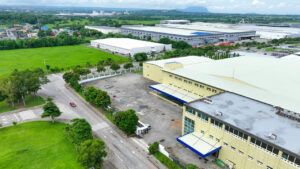THE overextraction of groundwater due to rising demand is heightening environmental and business risks, First Philippine Industrial Park (FPIP) said.
“Water demand continues to rise as the population grows and industries expand,” according to Jeremaine S. Valdes-Esguerra, head of FPIP’s water division, in a statement on Thursday.
“Groundwater, which used to be abundant, is now in decline in terms of quality and quantity. And this is all because of aquifer overuse, volcanic activity, and poor sanitation in surrounding areas,” she added.
She said overextraction of groundwater results in land subsidence, saltwater intrusion, and reduced surface water.
She noted that water scarcity is emerging as a national concern, and called water circularity an increasingly important sustainable solution.
“That is why we planned our moves and committed ourselves to act, so we can regenerate resources and help secure water for both the present and future generations,” she added.
Ms. Esguerra, who is also the head of FPIP Utilities, Inc., said a water treatment facility is currently being constructed within the 600-hectare FPIP site in Batangas to ensure reliable water supply for its locators.
It will not require groundwater extraction but instead treat water flowing through FPIP from the San Juan River, she said.
“Groundwater extraction has been a widespread practice around the world because it seems the easiest and most accessible solution to get water supply,” she said.
“But we have come to realize the harm the practice of groundwater extraction inflicts not just on immediate-term business, but on the environment. And so, we are implementing the river water treatment project as a way to address the very pressing issue of groundwater depletion,” she added.
The water treatment facility, which is expected to be completed by November, has the capacity to extract 20 million liters per day of water from the San Juan River.
It forms part of FPIP’s P4-billion integrated water management master plan, which also includes the integration of solar power into FUI’s water treatment facility, turning invasive water hyacinths into biodegradable material, and the reuse of rainwater.
FPIP was established by First Philippine Holdings Corp. and Sumitomo Corp. in 1996. It is now home to over 150 locators. — Justine Irish D. Tabile

